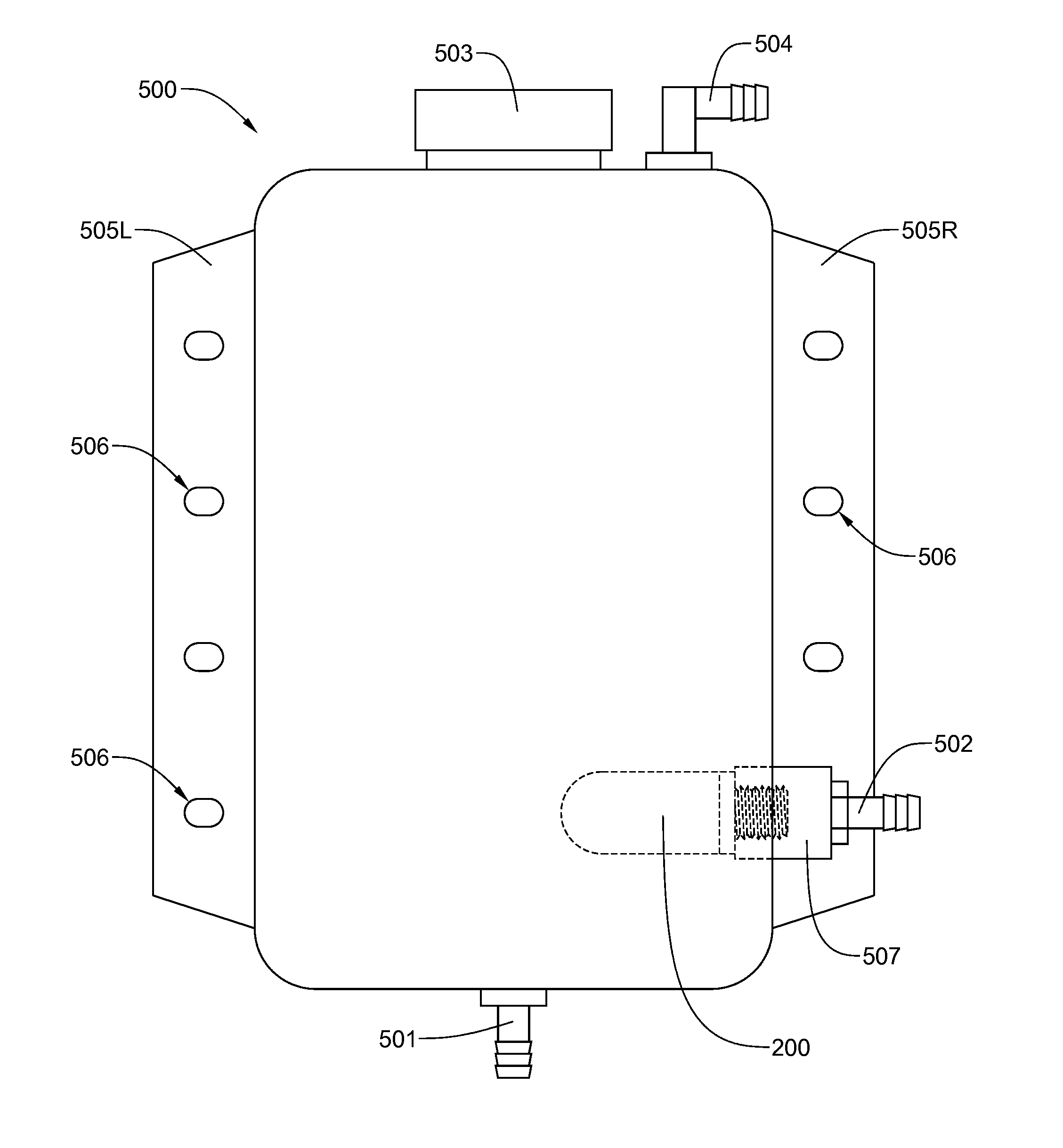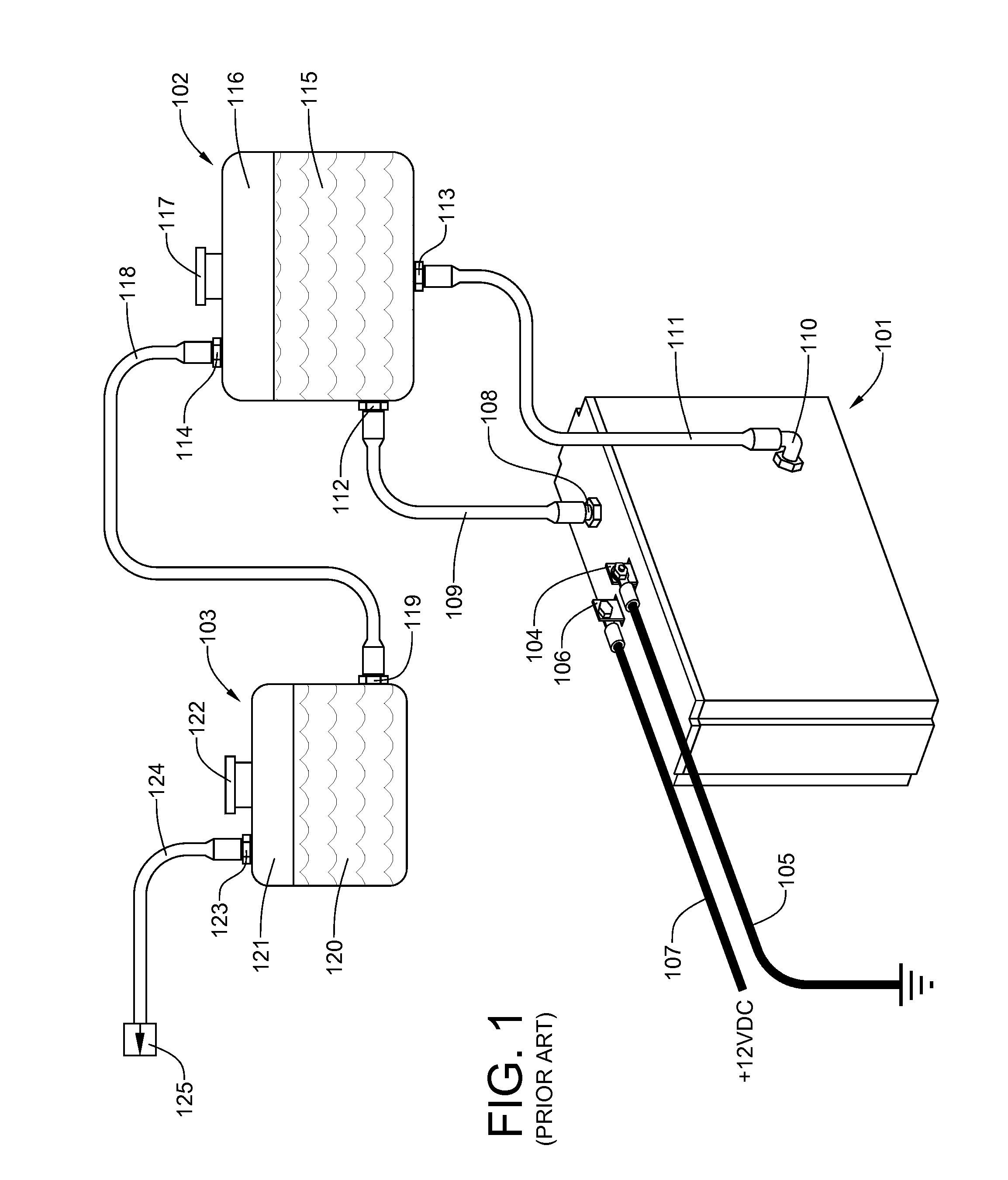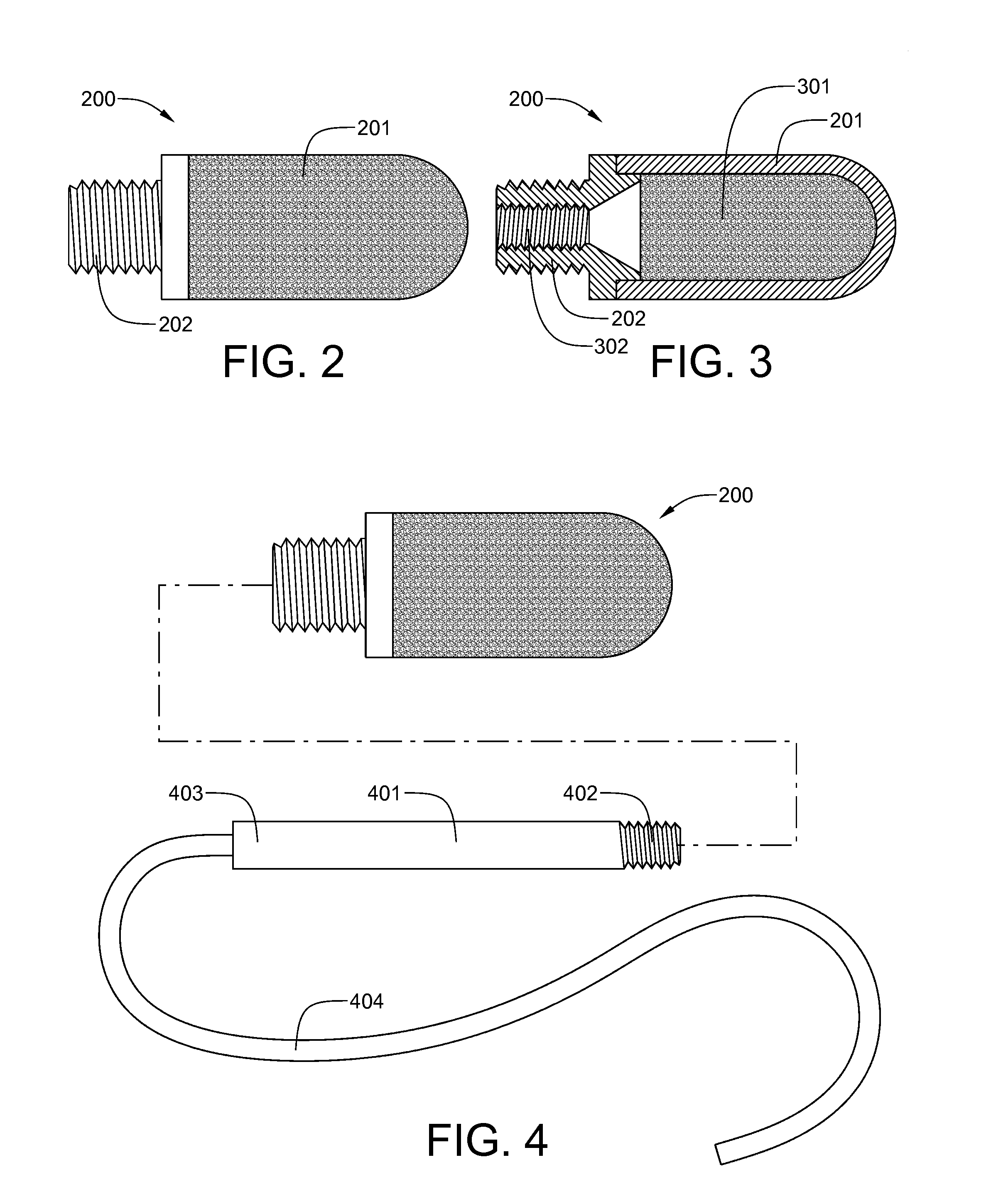Electrolyte supply tanks and bubbler tanks having improved gas diffusion properties for use in electrolyzer units
a technology of electrolyzer units and supply tanks, which is applied in the direction of electrolytic organic production, machines/engines, instruments, etc., can solve the problems of severe restrictions on gas flow through the diffuser, and achieve the effects of easy replacement, increased pore size of the first diffuser, and uniform and consistent flow
- Summary
- Abstract
- Description
- Claims
- Application Information
AI Technical Summary
Benefits of technology
Problems solved by technology
Method used
Image
Examples
Embodiment Construction
[0021]The invention will now be described in detail with reference to the attached drawing figures. It should be understood that although no attempt has been made to inaccurately portray the drawings, they still may not be drawn to scale.
[0022]The present invention is designed to eliminate virtually all electrolyte from the oxyhydrogen gas that is provided to the induction system of an internal combustion engine. The term “internal combustion engine”, as used herein, refers to any engine in which a fuel-air mixture is burned within the engine itself so that the hot gaseous products of combustion act directly on the surfaces of engine's moving parts. Such moving parts include, but are not limited to, pistons or turbine rotor blades. Internal-combustion engines include spark-ignition and compression-ignition engines of both two-stroke and four-stroke cycle types, gas turbine engines, jet engines, and rocket engines.
[0023]Referring now to FIG. 2, a porous polyethylene air diffuser 200 ...
PUM
| Property | Measurement | Unit |
|---|---|---|
| pore diameter | aaaaa | aaaaa |
| pore diameter | aaaaa | aaaaa |
| pore size | aaaaa | aaaaa |
Abstract
Description
Claims
Application Information
 Login to View More
Login to View More - R&D
- Intellectual Property
- Life Sciences
- Materials
- Tech Scout
- Unparalleled Data Quality
- Higher Quality Content
- 60% Fewer Hallucinations
Browse by: Latest US Patents, China's latest patents, Technical Efficacy Thesaurus, Application Domain, Technology Topic, Popular Technical Reports.
© 2025 PatSnap. All rights reserved.Legal|Privacy policy|Modern Slavery Act Transparency Statement|Sitemap|About US| Contact US: help@patsnap.com



